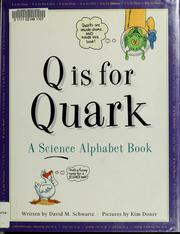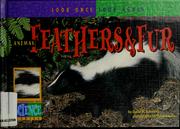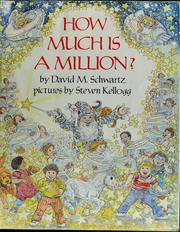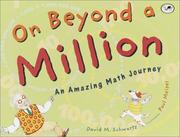
|
Among the flowers
|
David M. Schwartz |
Introduces, in simple text and photographs, the characteristics of a variety of flowers and some of the birds and insects that need flowers to survive. Includes the sunflower, bleeding heart, daylily… |
OL15125598W |

|
Animal eyes
|
David M. Schwartz |
Introduces, in simple text and photographs, the eyes of crabs, fish, frogs, horseflies, starfish, cats, and geckos. |
OL15125602W |

|
At the zoo
|
David M. Schwartz |
Introduces, in simple text and photographs, the characteristics of some of the animals that can be found at the zoo. Includes a tiger, peacock, lion, elephant, camel, parrot, and zebra. |
OL15125616W |

|
In the desert
|
David M. Schwartz |
Introduces, in simple text and photographs, the characteristics of various animals that live in the desert. Includes a coyote, gecko, rattlesnake, mouse, scorpion, and tarantula. |
OL15125642W |

|
In the garden
|
David M. Schwartz |
Explores the peas, potatoes, pumpkins, and other vegetables in a garden, as well as the insects and other animals that help them grow. |
OL15125646W |

|
Monarch Butterfly
|
David M. Schwartz |
See work: https://openlibrary.org/works/OL15125682W |
OL15125658W |

|
Plant leaves
|
David M. Schwartz |
Introduces, in simple text and photographs, the leaves of moss, cabbage, fern, sundew, maple, and the colored leaves of autumn. |
OL15125667W |

|
Underfoot
|
David M. Schwartz |
Explores the world of ants, centipedes, earthworms, star-nosed moles, and other animals living in or on the ground. |
OL15125676W |

|
Q is for quark
|
David M. Schwartz |
Explains the meaning of scientific terms which start with the different letters of the alphabet, beginning with atom, black hole, and clone. |
OL15832793W |

|
Animal tails
|
David M. Schwartz |
Introduces, in simple text and photographs, the tails belonging to a mosquito larva, lemur, guppy, tadpole, pig, earwig, and chameleon. |
OL15968655W |

|
Animal feathers & fur
|
David M. Schwartz |
Introduces, in simple text and photographs, the feathers or fur of a yellow warbler, porcupine, skunk, white-tailed deer, flying squirrel, owl, and dalmatian. |
OL15968662W |

|
How much is a million?
|
David M. Schwartz,Steven Kellogg,David M Schwartz |
Text and pictures try to make possible the conceptualization of a million, a billion, and a trillion. |
OL16054337W |

|
Animal eyes
|
David M. Schwartz |
Introduces, in simple text and photographs, the eyes of crabs, fish, frogs, horseflies, starfish, cats, and geckos. |
OL27960112W |

|
At the farm
|
David M. Schwartz |
Introduces, in simple text and photographs, the characteristics of some of the animals that can be found on a farm. Includes a sheep, rooster, mouse, goat, pig, horse, and duckling. |
OL83698W |

|
At the seashore
|
David M. Schwartz |
Introduces, in simple text and photographs, the characteristics of some of the animals and plants that can be found at the seashore. Includes a sea urchin, seagull, barnacle, crab, sea star, seaweed,… |
OL83700W |

|
If You Made a Million
|
David M. Schwartz,Steven Kellogg |
Describes the various forms which money can take, including coins, paper money, and personal checks, and how it can be used to make purchases, pay off loans, or build interest in the bank. |
OL83706W |

|
Look Once, Look Again
|
David M. Schwartz |
12 v. : 16 x 23 cm |
OL83707W |

|
On beyond a million
|
David M. Schwartz |
Explores counting by powers of ten all the way up to the largest numbers that exist. |
OL83711W |

















